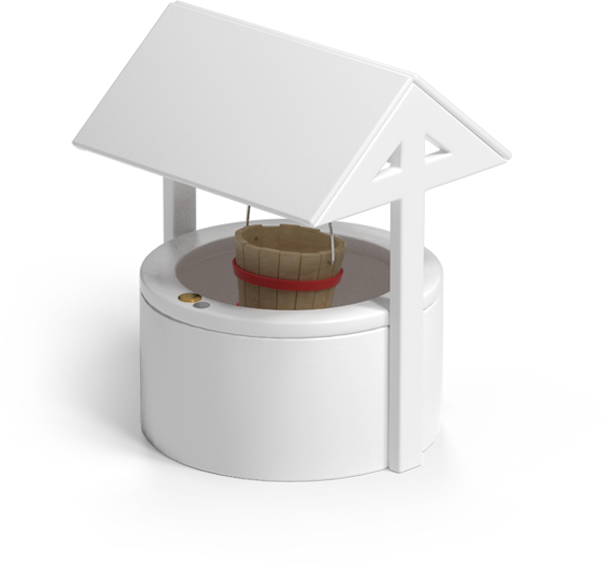New HMO Legislation: What You Need To Know
Autumn 2018 is set to see a revision of the standard requirements for Houses of Multiple Occupation (HMOs) with the Licensing coming into effect on October 1st. Here we run through everything that you need to know about these legislative changes.
By Jon Howe6/12/20

Autumn 2018 is set to see a revision of the standard requirements for Houses in Multiple Occupation (HMOs) with the Licensing of Houses in Multiple Occupation (Mandatory Conditions of Licenses) (England) Regulations 2018 coming into effect on October 1st. As expected, the draft regulations published earlier this year were passed by parliament in March and will be made law primarily to give council’s new power to control rogue landlords.
What is a HMO?
The Housing Act 2004 introduced a new definition of an HMO in 2006, which principally defined an HMO as any of the following:
- A house or flat let to three or more tenants and who form two or more households, but share a kitchen, bathroom or toilet.
- A house converted into bedsits and let to three or more tenants and who form two or more households and who share a kitchen, bathroom or toilet.
- A house converted into flats that are not wholly self-contained, are let to three or more tenants and who form two or more households, and who share a kitchen, bathroom or toilet.
- A building converted entirely into self-contained flats.
A stipulation of the property being an HMO is that it is used as the tenants’ only or main residence and is used solely or mainly to house tenants. This includes properties let to students, migrant workers and those used as a domestic refuge.
Why is new HMO legislation needed?
The main changes within the new legislation come in the form of council’s being given the power to set minimum bedroom size standards for HMOs, and to limit how many people can live in each bedroom. Fines of up to £30,000 can be imposed on those landlords who do not comply, and another strand to the legislation, also coming into effect on October 1st, is changing the criteria of what is required for landlords to obtain a licence from their local councils. It is all part of a crackdown on unscrupulous landlords looking to exploit vulnerable people and rent out overcrowded properties, and to implement comprehensive action to improve conditions for private tenants.
In announcing the new rules, Heather Wheeler MP, Minister for the Private Rented Sector, acknowledged that rogue landlords were in a minority, but there was evidence of people renting out squalid and dangerous properties and landlords looking to profit from them. The new measures mean that landlords will need to provide adequate space for their tenants, and the changes to the licensing system also means that the landlord network can be more closely regulated and therefore monitored.
What is the new maximum room size legislation?
From October 1st 2018, an HMO licensed under Part2 of the Housing Act 2004 will be required to have a floor area no smaller than 6.51 square metres in any one room. This is the main controlling stipulation of the new legislation, but it is broken down into more specific requirements controlling the space now allowed to be made available for people over the age of 10 and under the age of 10, and the number of people who can also share this space. This acknowledges the specific requirements for personal space, hygiene and safety of differing ages and seeks to ensure that rooms do not become overcrowded.
Licences issued from October 1st will contain conditions ensuring that the floor space of any room in the HMO used as sleeping accommodation:
- By one person aged over 10 is not less than 6.51square metres
- By two people aged over 10 is not less than 10.22 square metres
- By one person aged under 10 is not less than 4.64 square metres1
Also, any room in the HMO with a floor area less than 4.64 square metres must not be used as sleeping accommodation. Furthermore, you must notify the local authority if your HMO has a room measuring less than 4.64 square metres, regardless of what you intend to use it for.
Local authorities can grant existing licence holders and landlords of existing properties, a period of 18 months in which to prepare their accommodation and rectify any areas of an HMO that do not comply with these regulations, and then new standards will apply to all landlords seeking new licences. The HMO licence held by the landlord must specify the maximum number of persons who may occupy any room in the property, and the total number of people across all the different rooms must be equal to the number of people the house is to be home to 2.
Further conditions will be included in a licence, whereby the licence holder must ensure that:
- A room used as sleeping accommodation by persons over 10 only, is not used as such by more than the maximum number of people aged over 10, as stated in the licence.
- A room used as sleeping accommodation by persons under 10 only, is not used as such by more than the maximum number of people aged under 10, as stated in the licence.
- A room used as sleeping accommodation by persons over 10 and under 10, is not used as such by more than the maximum number of people aged over 10 or under 10, as stated in the licence3.
The number of people used for these stipulations includes only those who would normally be using the room for sleeping, ie. not a visitor of the main occupier. Also, a room is classed as sleeping accommodation if it is normally used as a bedroom, regardless of whether it is also used for other purposes.
Other HMO legislation
Another change coming from the same Licensing of Houses in Multiple Occupation (Mandatory Conditions of Licenses) (England) Regulations2018 is also effective from October 1st 2018, and is the requirement for more landlords to obtain mandatory licences from their council. This has been done by extending the criteria of property types that qualify as requiring a licence, and this now includes properties that are:
- occupied by five or more persons
- occupied by persons living in two or more separate households; and meet:
- the standard test under section 254(2) of the Act
- the self-contained flat test under section254(3) of the Act but is not a purpose-built flat situated in a block comprising three or more self-contained flats, or
- the converted building test under section 254(4)of the Act4.
A survey carried out by RLA PEARL found that the new legislation would result in an additional 177,000 HMOs coming under the mandatory licensing requirement. And the Government also said there would be no Grace period, as it had previously suggested there would be. The Government had intimated that six months would be allowed for HMO landlords to apply for a licence – where they hadn’t needed one previously – but upon passing the legislation they stated that all landlords must apply for a licence by October1st 2018.
One criteria was, however, removed from the mandatory licence stipulations, and that was the element covering properties of three storeys or more. These properties are no longer required to apply for a mandatory licence.
Further legislation was also passed to ensure landlords of HMOs provide an adequate number of rubbish bins, in order to quell fears of a build-up of unsightly rubbish outside some HMOs. This new law is a further move to ensure landlords are responsible and accountable, and certainly the requirement for more landlords to be mandatory licensed means councils have more transparency over the activities of landlords, and more jurisdiction to act where issues are found.
Debate over the new HMO legislation
An alternative view is that this now becomes a troublesome burden for local authorities and adds unnecessary bureaucracy, particularly for landlords who operate legitimately and responsibly, and also in light of the Government acknowledging that this was the case with the vast majority of landlords.
Indeed, opposition to the minimum room size regulations in particular, has led to a petition being raised calling for a parliamentary debate on the issue. Letting Agent groups have acknowledged the reasons behind the changes in legislation, but questioned whether they should go ahead, warning that the private rental sector could lose vital stock as a result of the Government crackdown.
This has led to HMO landlord Dhugal Clark launching a petition for a parliamentary debate, and he claims that the changes in legislation – and the subsequent reduction in rooms available for tenants –could become costly for those living in bigger properties, where some rooms can’t now be let out. This will result in those tenants paying both a higher rent and a higher council tax contribution. It is widely accepted that it is far too late for a parliamentary debate, however, with the bill already having been passed and set for becoming law. But there are calls for common sense to prevail, which may be taken into account at a later date.
Letting agents are pointing to a number of older properties with box rooms of a good standard of accommodation, and an existing market for people who are willing to let a smaller room in order to save money. The argument being that the legislation now prevents these people making an informed decision and forces them to pay for a bigger room and pay costs that are shared between fewer people. The new rules also remove a council’s discretion to assess a property on its own merits.
These are wide-ranging proposals that will make a significant difference to the private rental sector and HMO landlords, and with many people within the sector unconvinced of their merit, it is likely that pressure will continue to be applied, long after October 1st has been and gone.
Sources
- www.landlords.org.uk NLA- HMO minimum room sizes to come into force 1 October 2018
- www.rla.org.uk Revealed: New HMO room size regulations to come in this autumn
- www.landlordsguild.com The changes to HMOs you need to know about
- www.rla.org.uk Extension of mandatory HMO licensing set for October 2018
Take a look at our other articles




